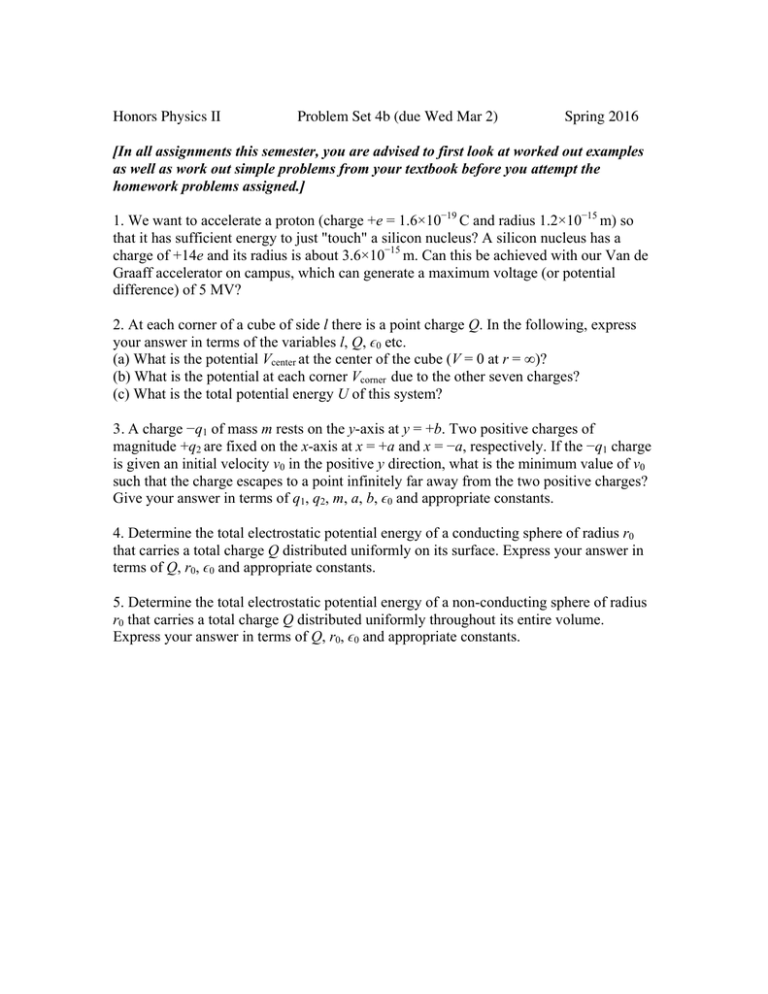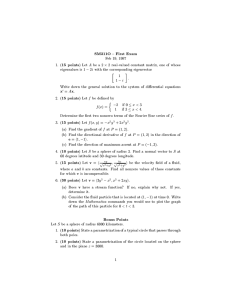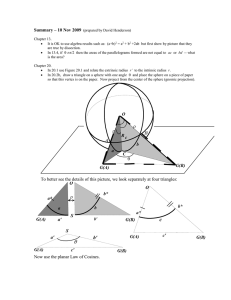Honors Physics II Problem Set 4b (due Wed Mar 2) Spring 2016 [In
advertisement

Honors Physics II Problem Set 4b (due Wed Mar 2) Spring 2016 [In all assignments this semester, you are advised to first look at worked out examples as well as work out simple problems from your textbook before you attempt the homework problems assigned.] 1. We want to accelerate a proton (charge +e = 1.6×10−19 C and radius 1.2×10−15 m) so that it has sufficient energy to just "touch" a silicon nucleus? A silicon nucleus has a charge of +14e and its radius is about 3.6×10−15 m. Can this be achieved with our Van de Graaff accelerator on campus, which can generate a maximum voltage (or potential difference) of 5 MV? 2. At each corner of a cube of side l there is a point charge Q. In the following, express your answer in terms of the variables l, Q, ϵ0 etc. (a) What is the potential Vcenter at the center of the cube (V = 0 at r = ∞)? (b) What is the potential at each corner Vcorner due to the other seven charges? (c) What is the total potential energy U of this system? 3. A charge −q1 of mass m rests on the y-axis at y = +b. Two positive charges of magnitude +q2 are fixed on the x-axis at x = +a and x = −a, respectively. If the −q1 charge is given an initial velocity v0 in the positive y direction, what is the minimum value of v0 such that the charge escapes to a point infinitely far away from the two positive charges? Give your answer in terms of q1, q2, m, a, b, ϵ0 and appropriate constants. 4. Determine the total electrostatic potential energy of a conducting sphere of radius r0 that carries a total charge Q distributed uniformly on its surface. Express your answer in terms of Q, r0, ϵ0 and appropriate constants. 5. Determine the total electrostatic potential energy of a non-conducting sphere of radius r0 that carries a total charge Q distributed uniformly throughout its entire volume. Express your answer in terms of Q, r0, ϵ0 and appropriate constants.






